We use cookies to improve the services we offer you. By continuing to browse this site, you consent to keep them in accordance with our Privacy Policy.
×We use cookies to improve the services we offer you. By continuing to browse this site, you consent to keep them in accordance with our Privacy Policy.
× 254
254
 8 min
8 min

Ever feel like there’s just not enough time in the day to create all the amazing content you have in mind? You’re not alone.
Nowadays, the demand for fresh, engaging content is exploding across all platforms. But constantly producing content is a struggle for creators. Short deadlines, not enough resources, and getting through the writer’s block can be overwhelming for content creators. It can also make them feel hopeless.
There’s a light at the end of the content creation tunnel, and it comes in three distinct forms: manual, template tools, and automated approaches. Let’s explore these content creation tools and their strengths and weaknesses so you can choose the best AI tools for content creation.
For some, there’s nothing quite like the satisfaction of crafting content from scratch. That is where traditional content creation tools step in.
Benefits:
Drawbacks:
Let’s look at a few manual editing tools:
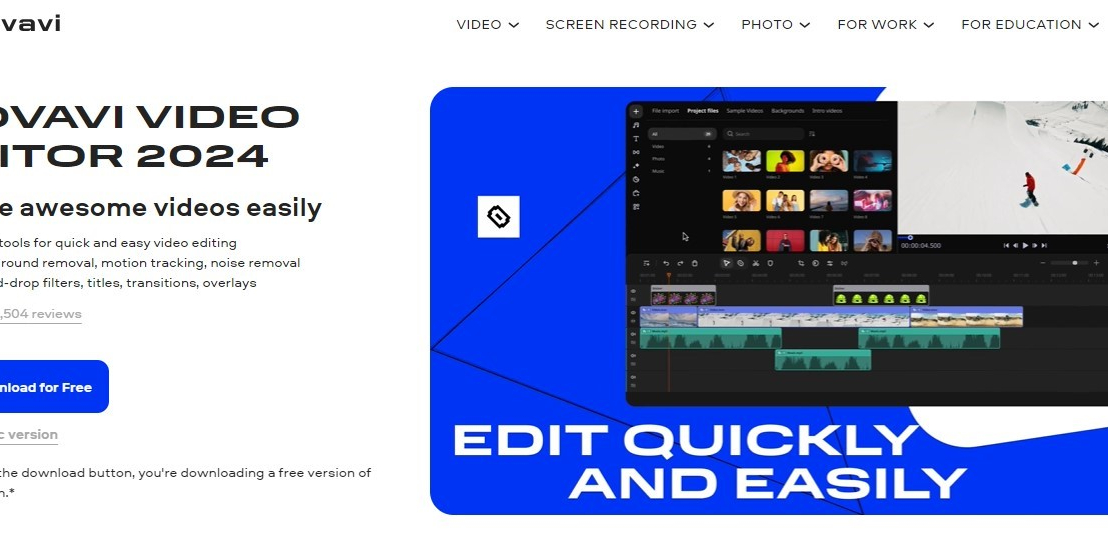
Movavi Video Editor is known for its user-friendly and efficient multimedia products. It offers a good number of tools for making wow videos out of raw footage.
This no-watermark video editing software uses AI to ease a few editing tasks, including features like background removal and noise reduction. After editing, the program lets you export the video directly to social media platforms like YouTube and TikTok.
And with a library of content collection, even a beginner can create movies by adding subtitles, applying filters, inserting background music, etc. It has something to offer editors of all levels, combining basic, advanced, and AI editing.
Pricing: free version is available, premium plans start at $19.95/month
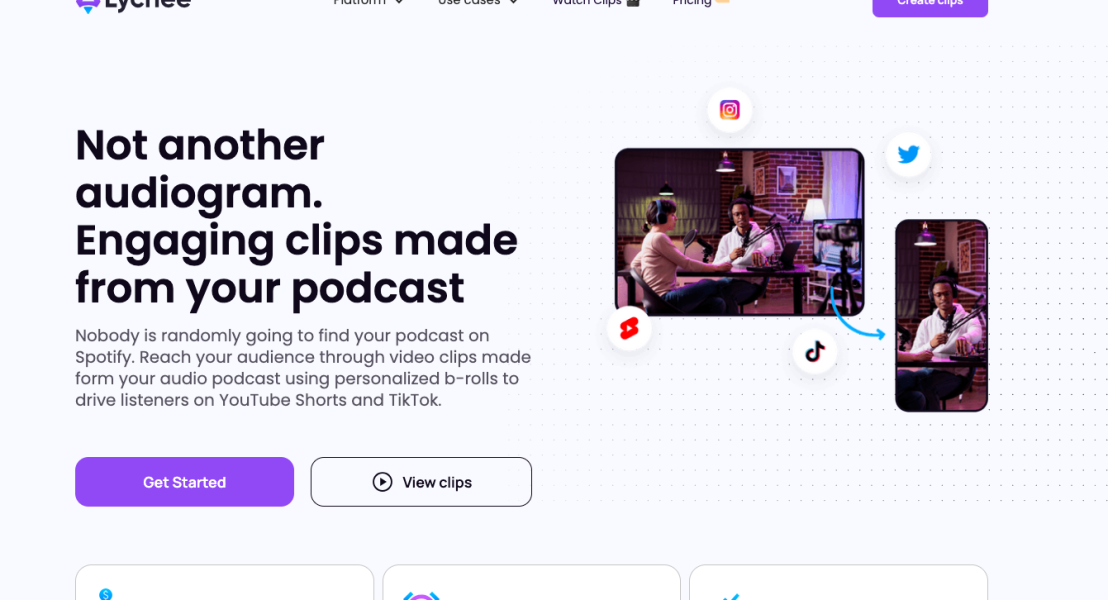
Lychee is a web platform designed specifically for creating short, social media-friendly videos from podcasts. It caters to those who want to repurpose their existing podcast content into a visually engaging format for platforms like YouTube, Instagram, or TikTok.
While Lychee offers a software testing services, it’s ultimately a manual tool. You don’t have complete control over the editing process, and the creative vision rests with the team. You provide the raw material (podcast audio), and they deliver the finished video product.
Pricing: the cost is based on the number of clips, starting from $500 for 10 clips
Template content creation tools offer a happy medium between complete control and lightning-fast creation. They are valuable for content creators, especially those new to design or working with tight deadlines. However, understanding their limitations is crucial to ensure your content maintains creative flair and brand consistency.
Benefits:
Drawbacks:
Platforms like Canva and Visme are fantastic options for non-designers. They offer user-friendly interfaces that make creating stunning visuals easy.
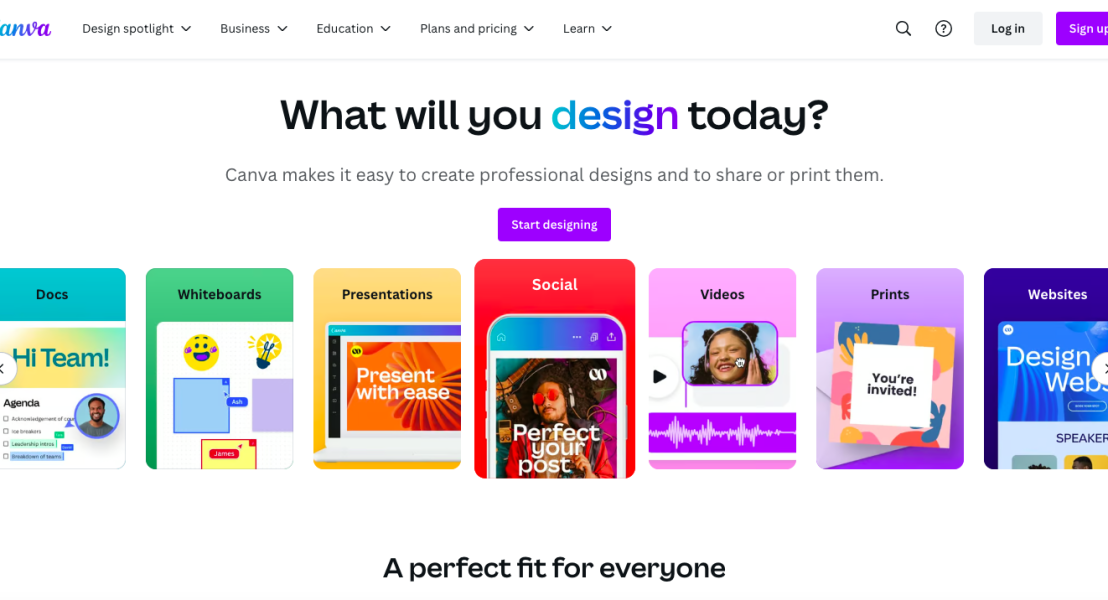
Canva stands out as a versatile and user-friendly design platform. So, for example, you can create a YouTube banner, a logo, or the whole web design there. Regardless of design experience, it empowers anyone to create professional-looking visuals for various purposes.
From social media posts and presentations to infographics and marketing materials, Canva’s online video editor caters to a broad spectrum of design needs. The platform boasts a vast collection of pre-designed templates for various formats.
The tool also integrates AI features like Magic Resize, which automatically adjusts designs for different formats, and Background Remover for quick and easy image background removal.
Pricing: the video editor is free to use, Pro version for $120/year to unlock all features
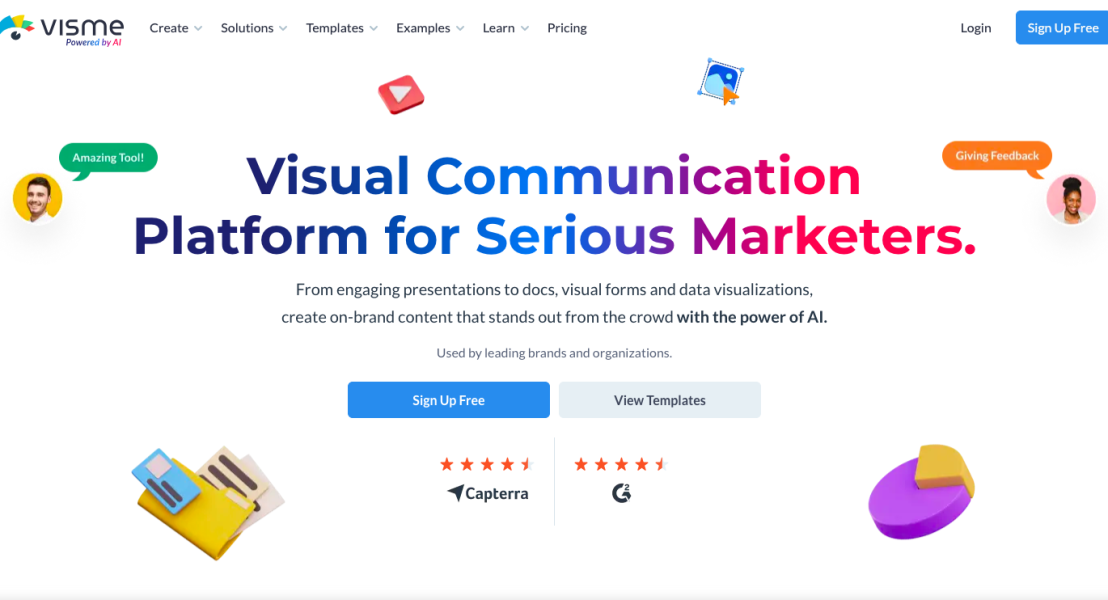
Visme is another design platform that empowers users to create various professional-looking videos for visual content marketing, even without extensive design experience. It offers a library of pre-made templates and a drag-and-drop interface, making it easy to start quickly.
Visme’s collection of templates includes various valuable assets, including presentations, social media graphics, documents, infographics, whiteboards, charts, graphs, and mockups.
The platform also offers advanced features on premium plans, including AI-powered tools like an AI writer, image generator, and content calendar to streamline your creation workflow.
Pricing: free version available, price starts at $29/mo
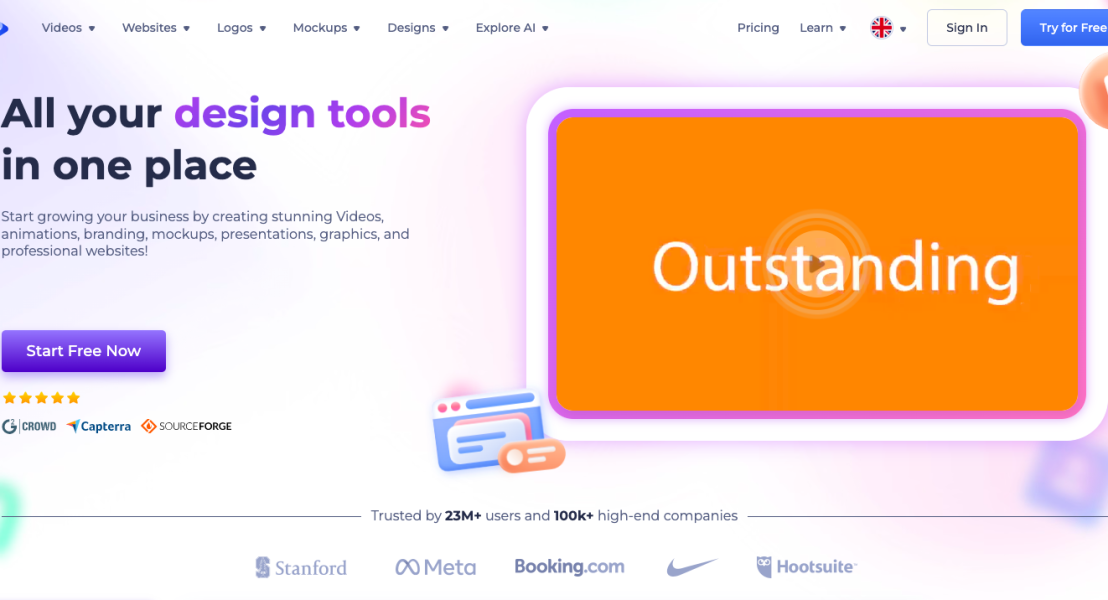
Renderforest is an all-in-one branding platform that empowers users, especially those without design expertise, to create high-quality visual content. It caters to freelancers, startups, and small businesses by offering a suite of tools that replace the need for multiple design subscriptions.
With a library of over 500 pre-made video templates and countless scenes, you can create explainer animations, promotional videos, intros, outros, and more – all through a user-friendly drag-and-drop interface.
Renderforest allows you to design and build websites without coding knowledge. They offer pre-designed templates, hosting options, and SEO tools to help your website get noticed.
Pricing: offers a free version, paid plans starting from $9.99/month
The time savings with automation are undeniable. You can create massive amounts of content with minimal effort, making it an excellent option for busy content creators or those new to the game. However, it’s important to manage expectations since AI and ML are still in their initial days, and the automation is based on both AI and ML.
Benefits:
Drawbacks:
Platforms like Rizzle are pioneering this space, offering tools that convert text to video, video to thumbnails, and even text to infographics and maps!
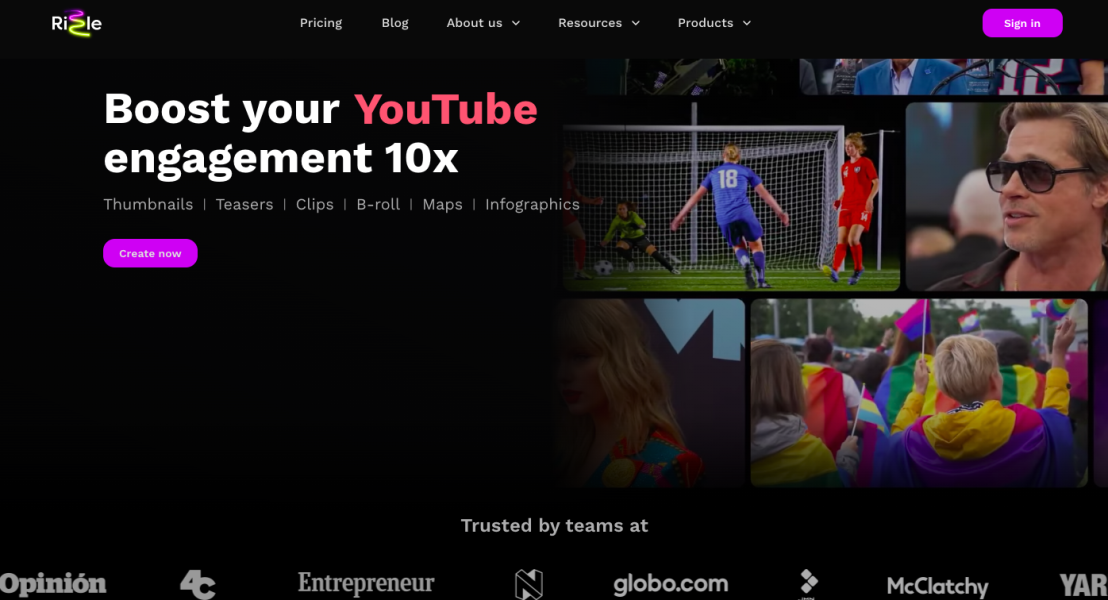
Rizzle is a game-changer video editing platform, leveraging AI to automate video creation from text, podcast, and video inputs. Partnering with Getty Images, it’s one of the best AI for video generation to create high-quality AI faceless YouTube videos in minutes.
Its AI-assisted custom thumbnails help generate videos in minutes. These thumbnails use SEO-friendly titles and high-quality stock footage from Getty Images to increase click-through rates.
Rizzle’s main podcast-to-video feature generates:
-Engaging teasers that grab attention while showing snippets of the entire video
-Highlights that showcase all the important sections of the video and
-Clips that focus on one specific segment.
This allows you to repurpose your content and reach a broader audience on platforms like YouTube.
Pricing: starts at $10 per month, with the first 90 tokens for free
So, which AI-powered content creation tool is right for you? The answer, as always, depends on your unique needs and goals. Here are some key factors to consider:
The future of content creation isn’t a battle between manual creation, templates, and automation – it’s a harmonious collaboration. Weighing the strengths and weaknesses of each approach, you can craft a content creation strategy that saves you time, boosts your creativity, and delivers high-quality content that resonates with your audience.
Now, go forth and conquer the content creation world!